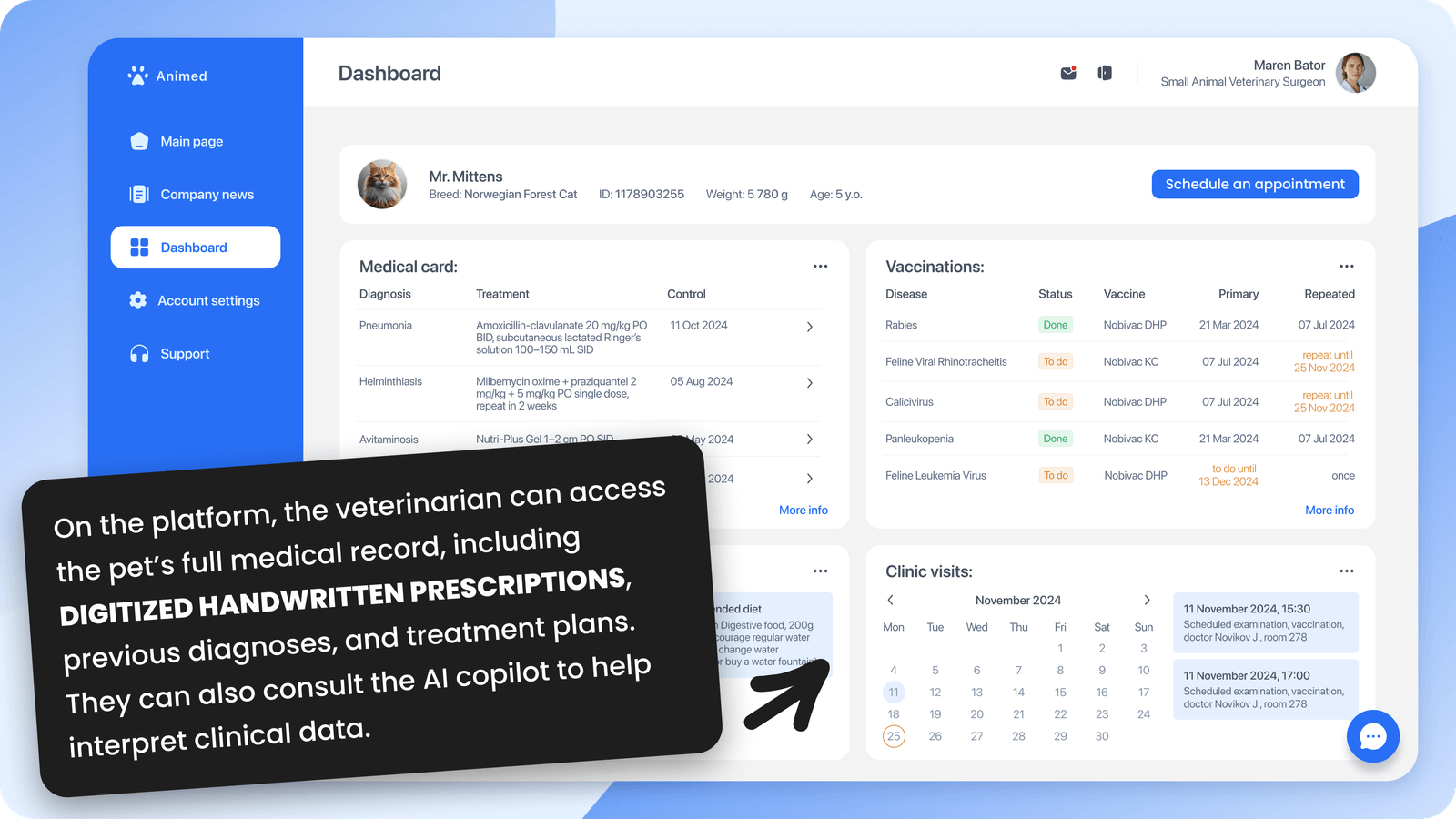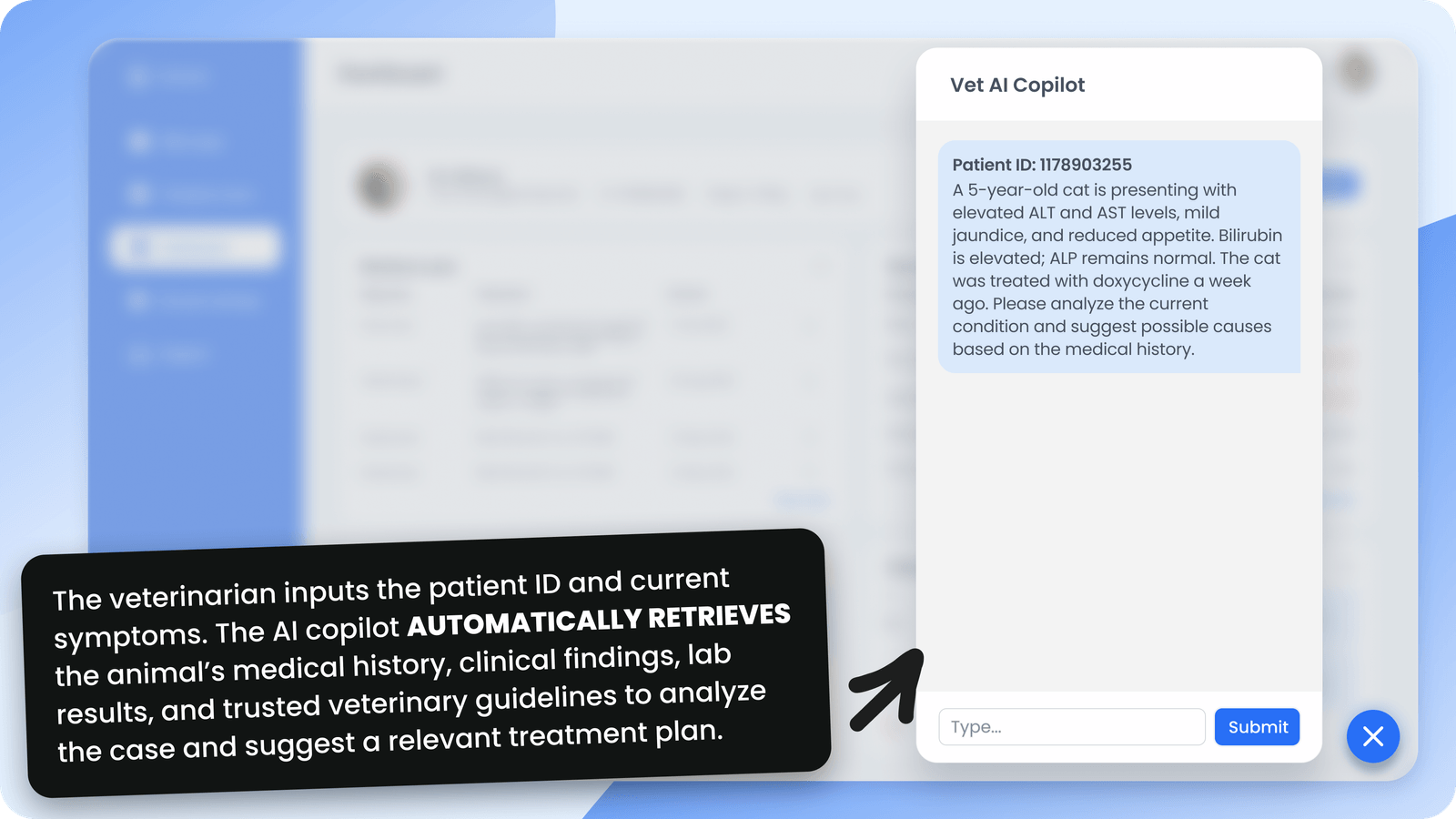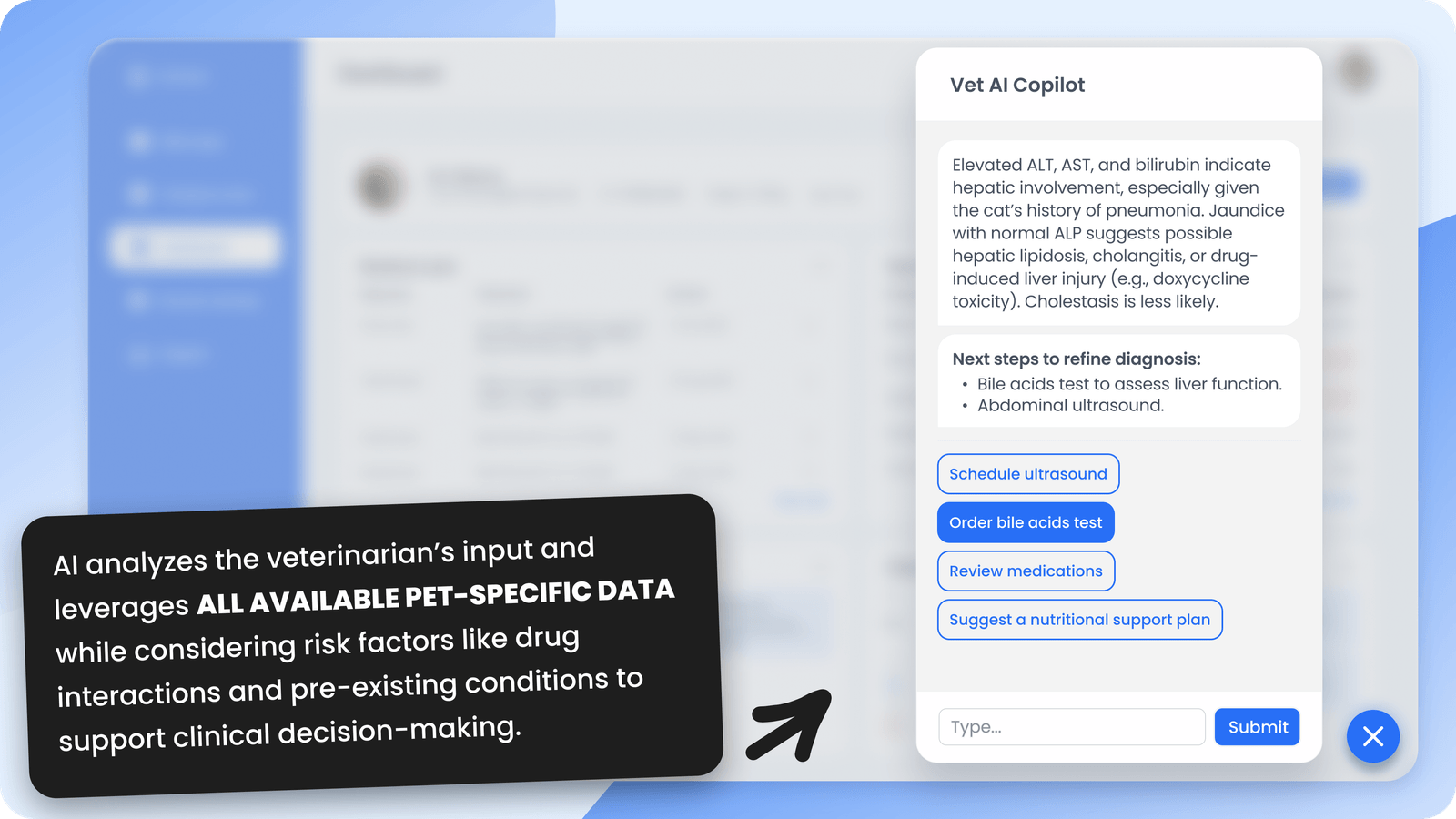AI co-pilot for veterinary medical records
The Aristek team developed an AI-powered solution to streamline veterinary medical record processing, enhancing efficiency and decision-making for veterinarians. The smart AI co-pilot functions as an add-on and can be easily integrated into various platforms.

Key achievements
| 40% | less time spent on medical records review |
| 25% | increase in early detection of health issues |
| 30% | reduction in diagnostic errors |
Project scope
The main goal of the solution was to analyze all available medical cases to identify potential issues and determine proactive actions that could be taken.
Here’s how the team approached the development and integration process step by step:
Comprehensive data collection
The team gathered diverse veterinary medical records, including handwritten notes, ensuring compliance with privacy standards. Data was stored securely in AWS S3, allowing easy access for processing and training.
Data cleaning & preprocessing
Handwritten text was digitized using Optical Character Recognition (OCR) powered by AWS Textract. The data was then extensively cleaned and standardized through custom-built processing pipelines.
Custom AI model development
A hybrid AI model using NLP and Hugging Face Transformers was developed for text analysis, with GPT-4o powering a complex multi-agent system coordinated by a supervisory agent for task delegation and communication.
Seamless platform integration
The AI-powered tool was integrated into the telemedicine platform using AWS Lambda for serverless execution and AWS API Gateway for secure API communication. This ensured real-time processing of patient data, generating summaries on demand for faster decision-making.
Backend
The backend was powered by Python-based microservices deployed on AWS Lambda for serverless execution. AI processing pipelines used AWS Glue for ETL tasks and OpenSearch for efficient case retrieval. Secure and scalable communication between the platform and the AI engine was established using AWS API Gateway and IAM. This ensured real-time data processing and robust system performance under growing consultation volumes.
Frontend
The AI assistant and dynamic summaries were integrated into the existing React-based interface. Our team ensured a seamless user experience where veterinarians could interact with AI-generated case insights, view flagged risks, and retrieve similar historical cases – all from within the same consultation screen. The design emphasized intuitive UX with a minimal learning curve.
Tools & technologies
Optimize your veterinary practice with AI-powered diagnostics







